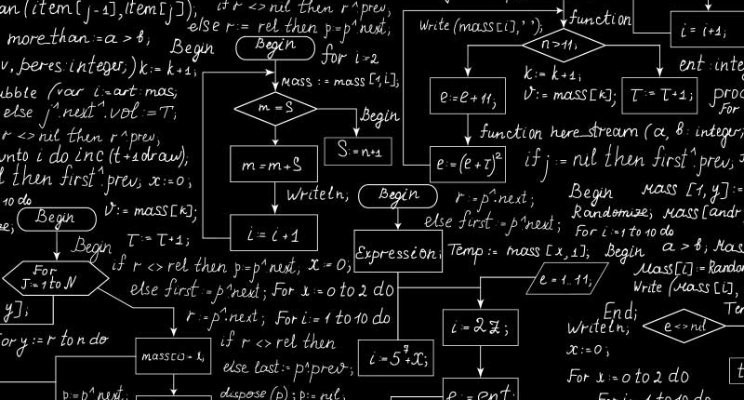Machine learning (ML) has significantly impacted various industries, from healthcare to finance and beyond. At its core, machine learning revolves around algorithms—structured sets of rules or instructions that guide computers in learning from data, identifying patterns, and making decisions. Understanding how these algorithms have evolved over time offers insight into the rapid advancements in the field of artificial intelligence (AI).
The Early Days: The Foundation of Machine Learning
Machine learning as a concept dates back to the mid-20th century. The idea that machines could learn from data and improve their performance autonomously was revolutionary at that time. In the beginning, ML algorithms were simple and limited by the computational power available. These early algorithms laid the groundwork for more sophisticated models used today.
Read Understanding AI Algorithms at Onlyaiblog.
1. 1950s-1960s: The Birth of the Concept
The term “machine learning” was first coined by Arthur Samuel in 1959. He developed one of the earliest ML algorithms—a program that enabled a computer to play checkers and learn to improve its game over time. This marked the beginning of using algorithms to teach machines to make decisions based on data.
Around the same period, Frank Rosenblatt introduced the perceptron, an algorithm inspired by the human brain’s neural networks. The perceptron was a simple linear classifier that could distinguish between two classes. Although limited in its capabilities, it was a significant step towards developing neural networks, which are now fundamental to modern ML.
2. 1970s-1980s: The Rise of Symbolic Learning
In the 1970s and 1980s, the focus shifted towards symbolic learning, a subfield of ML that involves teaching computers to learn from symbols, rules, and logic rather than numerical data. This era saw the development of decision trees, a type of algorithm that uses a tree-like model of decisions to solve problems.
Decision trees became popular due to their simplicity and interpretability. They allowed machines to make decisions by following a series of if-then rules, making them easy to understand and implement. However, the limitations of symbolic learning, such as handling noisy data, prompted researchers to explore other techniques.
3. 1990s: The Emergence of Statistical Learning
The 1990s marked a shift towards statistical learning, where algorithms were designed to learn from data by identifying patterns and relationships. This era saw the development of support vector machines (SVM), a powerful classification algorithm that maximizes the margin between different classes.
Statistical learning introduced new techniques such as logistic regression, k-nearest neighbors (KNN), and naive Bayes classifiers. These algorithms leveraged statistical principles to predict outcomes, classify data, and make decisions. The focus on data-driven learning set the stage for the next phase in ML evolution.
The Present: Advanced Algorithms and Widespread Adoption
The 21st century has witnessed a surge in machine learning research and application. Several factors, including increased computational power, the availability of large datasets, and advances in algorithms, have driven this progress. Today’s ML algorithms are more complex, capable, and versatile, allowing them to solve a broader range of problems.
1. 2000s: The Advent of Ensemble Learning
Ensemble learning became popular in the early 2000s. It involves combining multiple models to improve prediction accuracy and reduce errors. This approach has proven effective because different models may capture different patterns in the data, and combining them can lead to more robust predictions.
- Random Forests: An ensemble method that uses multiple decision trees to improve classification and regression accuracy. By averaging the results of numerous decision trees, random forests reduce overfitting and enhance generalization.
- Boosting Algorithms: Boosting algorithms like AdaBoost and Gradient Boosting improve weak learners’ performance by focusing on instances the model previously classified incorrectly. These algorithms have shown significant success in tasks such as image recognition and natural language processing.
2. 2010s: The Rise of Deep Learning
The 2010s saw a revolution in ML with the rise of deep learning—a subset of ML that uses neural networks with many layers (deep networks) to model complex patterns in large datasets. Deep learning has transformed various domains, from image and speech recognition to natural language processing.
- Convolutional Neural Networks (CNNs): Primarily used for image and video analysis, CNNs have achieved state-of-the-art results in computer vision tasks. They are designed to automatically and adaptively learn spatial hierarchies of features from input data.
- Recurrent Neural Networks (RNNs): RNNs are designed to process sequential data, making them ideal for tasks like language modeling and time series prediction. Long Short-Term Memory (LSTM) networks, a type of RNN, have further improved performance by addressing the issue of long-term dependencies.
Deep learning models have also benefited from advances in hardware, such as graphics processing units (GPUs) and specialized processors like tensor processing units (TPUs), enabling faster and more efficient training of complex models.
3. Current Trends: Explainable AI and Transfer Learning
While deep learning has been remarkably successful, it has also faced challenges such as lack of interpretability and the need for large amounts of labeled data. These challenges have given rise to new trends in ML research.
- Explainable AI (XAI): There is a growing demand for models that provide insights into how they make decisions. XAI aims to make black-box models like deep neural networks more transparent and understandable, which is crucial for applications in healthcare, finance, and other regulated industries.
- Transfer Learning: Transfer learning allows models to leverage knowledge gained from solving one problem to solve a related but different problem. This approach is particularly useful when labeled data is scarce, and it has shown success in applications like natural language processing and computer vision.

The Future: Emerging Paradigms and Possibilities
As machine learning continues to evolve, several emerging paradigms are shaping its future. These new directions promise to address current limitations and unlock new possibilities.
1. Federated Learning: Decentralized Model Training
Federated learning is an innovative approach that enables training machine learning models across multiple devices without sharing data. This decentralized learning method addresses privacy concerns and reduces the need for data centralization.
Federated learning is particularly relevant in sectors like healthcare, where sensitive data cannot be shared due to privacy regulations. It enables organizations to build robust models without compromising data security or patient confidentiality.
2. Quantum Machine Learning: The Power of Quantum Computing
Quantum machine learning (QML) explores the potential of quantum computing to solve complex machine learning problems more efficiently than classical computers. Quantum computers can process vast amounts of data simultaneously, potentially speeding up the training of large-scale ML models.
While QML is still in its infancy, it holds promise for solving optimization problems, simulating complex systems, and breaking cryptographic codes. As quantum hardware matures, QML could significantly impact fields ranging from material science to cryptography.
3. AutoML: Automation in Machine Learning
Automated Machine Learning (AutoML) aims to make ML more accessible by automating the end-to-end process of applying ML to real-world problems. AutoML tools help non-experts build ML models without requiring deep expertise in data science or programming.
AutoML platforms automate tasks such as data preprocessing, feature selection, model selection, and hyperparameter tuning. This democratizes ML, allowing businesses and individuals to leverage its power without extensive technical knowledge.
4. Meta-Learning: Learning to Learn
Meta-learning, or “learning to learn,” focuses on creating algorithms that learn how to learn new tasks quickly. Unlike traditional ML, where a model is trained for a specific task, meta-learning aims to develop models that can adapt to new tasks with minimal training.
Meta-learning has potential applications in robotics, where machines must quickly learn new skills or adapt to changing environments. It also has implications for personalized AI, where models need to adapt rapidly to individual user preferences.
The Challenges Ahead: Ethical, Technical, and Practical Concerns
While the future of machine learning looks promising, several challenges remain. Addressing these concerns is crucial to ensuring that ML continues to benefit society while minimizing potential risks.
1. Ethical Considerations
As ML algorithms become more powerful, ethical concerns around bias, fairness, and transparency are growing. Bias in training data can lead to biased models, resulting in unfair outcomes. Ensuring fairness in ML decision-making requires careful consideration of data sources, model design, and evaluation criteria.
2. Data Privacy and Security
With the increasing use of ML in sensitive areas such as healthcare and finance, data privacy and security have become paramount. Techniques like federated learning and differential privacy are being developed to protect data while still allowing for effective model training.
3. Scalability and Computational Resources
The growing complexity of ML models demands significant computational resources. Training deep learning models requires vast amounts of data and processing power, which can be cost-prohibitive for many organizations. Finding ways to make ML more resource-efficient will be key to its continued growth.
4. Interpretability and Trust
Many powerful ML models, particularly deep learning networks, lack interpretability. This “black-box” nature makes it challenging to understand how decisions are made, which can be problematic in critical applications like medicine or law. Improving the interpretability of ML models is essential for building trust and ensuring their responsible use.
Conclusion
The evolution of machine learning algorithms from simple linear models to complex neural networks and beyond reflects the rapid pace of innovation in the field of AI. Understanding the past, present, and future of these algorithms is vital to appreciating their impact on various sectors and anticipating future developments.
As machine learning continues to advance, it will bring new opportunities and challenges. Addressing these challenges, from ethical considerations to interpretability, will be crucial in ensuring that machine learning technology is used responsibly and effectively.

